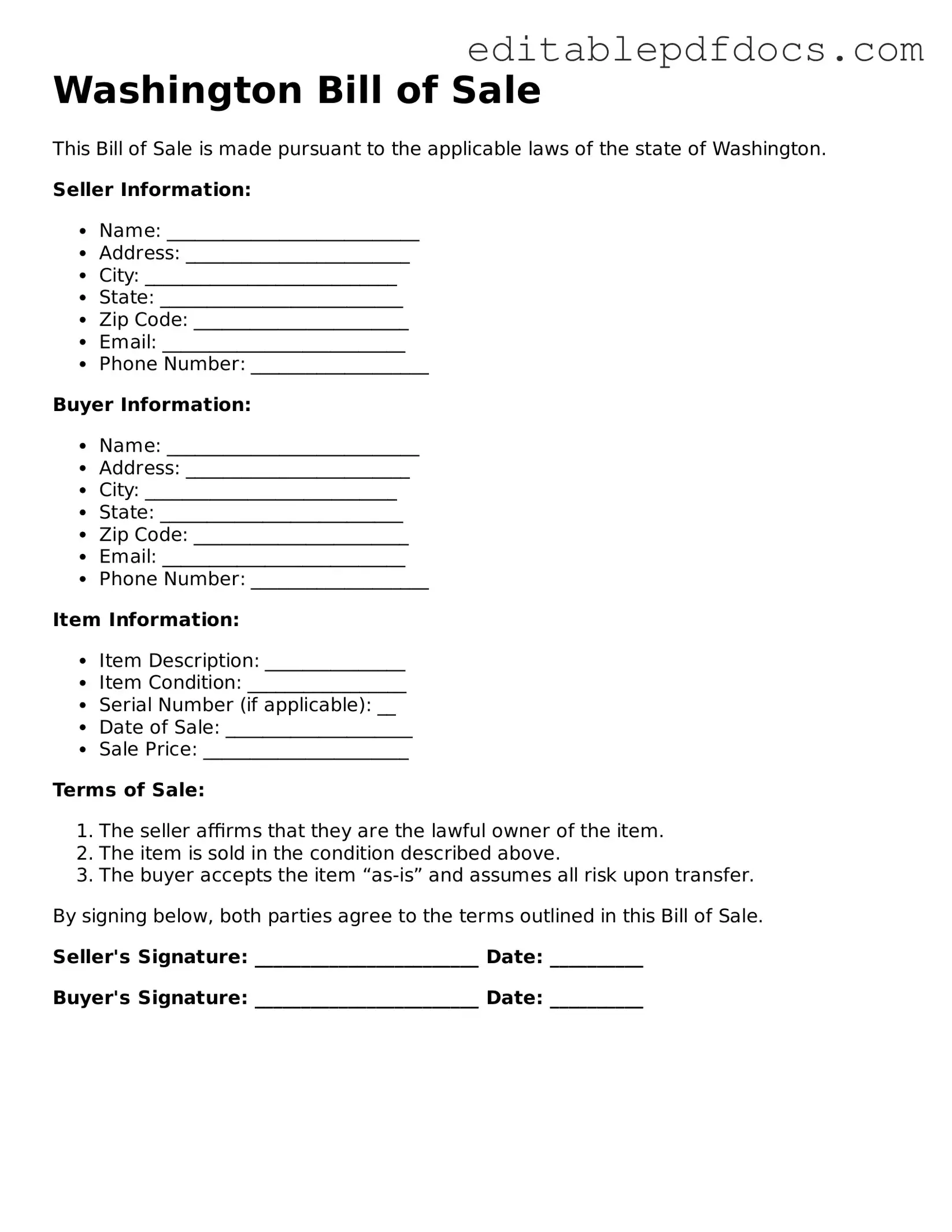Filling out the Washington Bill of Sale form can seem straightforward, but many people make common mistakes that can lead to complications. One frequent error is failing to provide complete information about the buyer and seller. Each party's name, address, and contact information must be accurate and fully detailed. Incomplete information can create confusion and may complicate future transactions.
Another mistake occurs when individuals neglect to include a clear description of the item being sold. A vague description can lead to disputes later on. It’s essential to specify the make, model, year, and any identifying numbers, such as a Vehicle Identification Number (VIN) for vehicles. This clarity helps protect both the buyer and seller.
People often overlook the importance of including the sale price. While it may seem obvious, not stating the price can lead to misunderstandings. The price should be clearly written in both numerical and written form to avoid any discrepancies.
Additionally, many forget to sign the form. Both the buyer and seller must sign the Bill of Sale for it to be legally binding. Without signatures, the document lacks authenticity and may not hold up in legal situations.
Another common mistake is not dating the form. The date of the transaction is crucial for record-keeping and can impact the transfer of ownership. Failing to include a date can lead to issues regarding the timing of the sale.
Some individuals also make the error of not providing any disclosures about the item. If the item has defects or issues, these should be disclosed in the Bill of Sale. Transparency helps prevent future disputes and builds trust between the parties involved.
Finally, people often forget to keep a copy of the completed Bill of Sale. It is important for both parties to retain a copy for their records. This document serves as proof of the transaction and can be useful for tax purposes or in case of future disputes.
